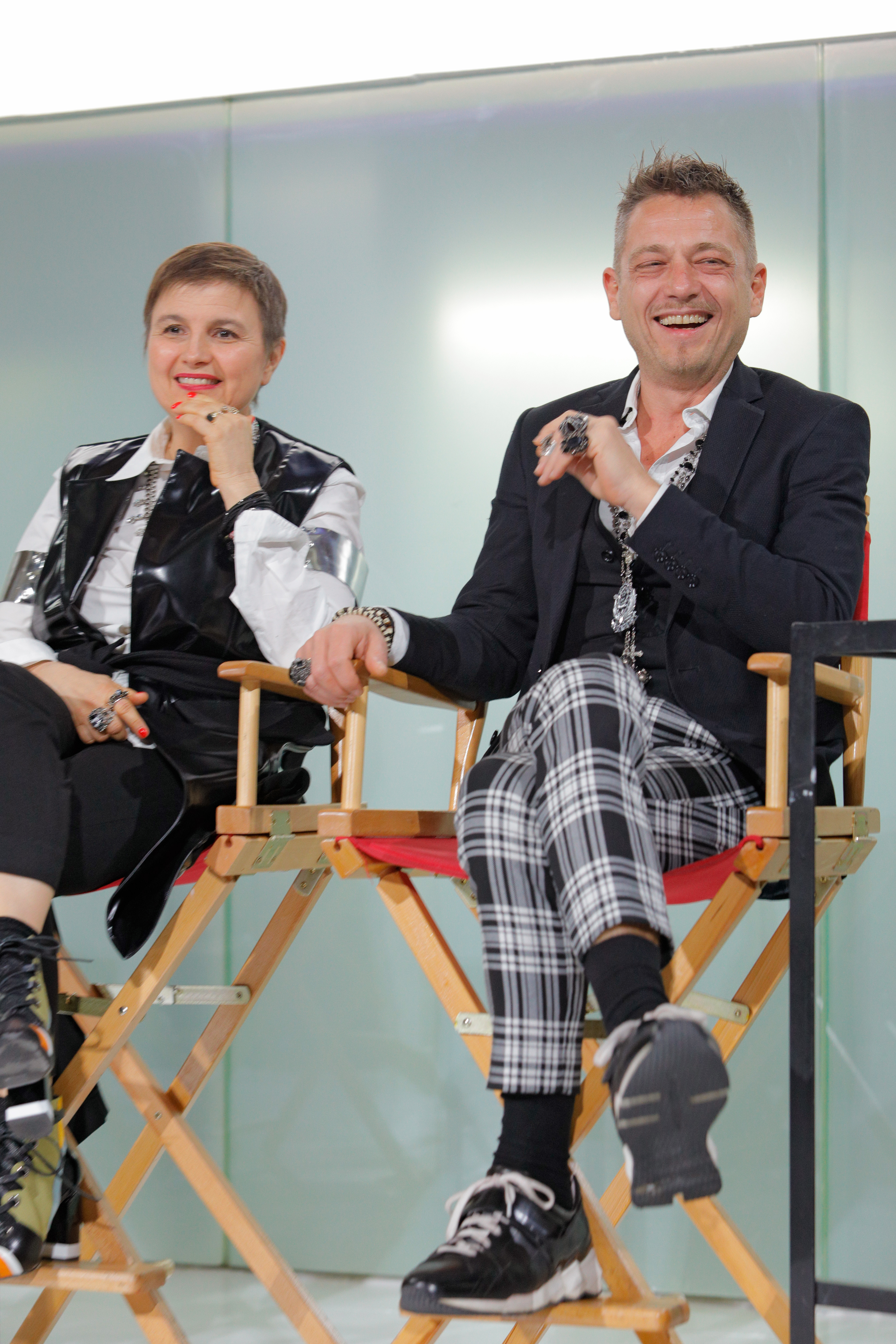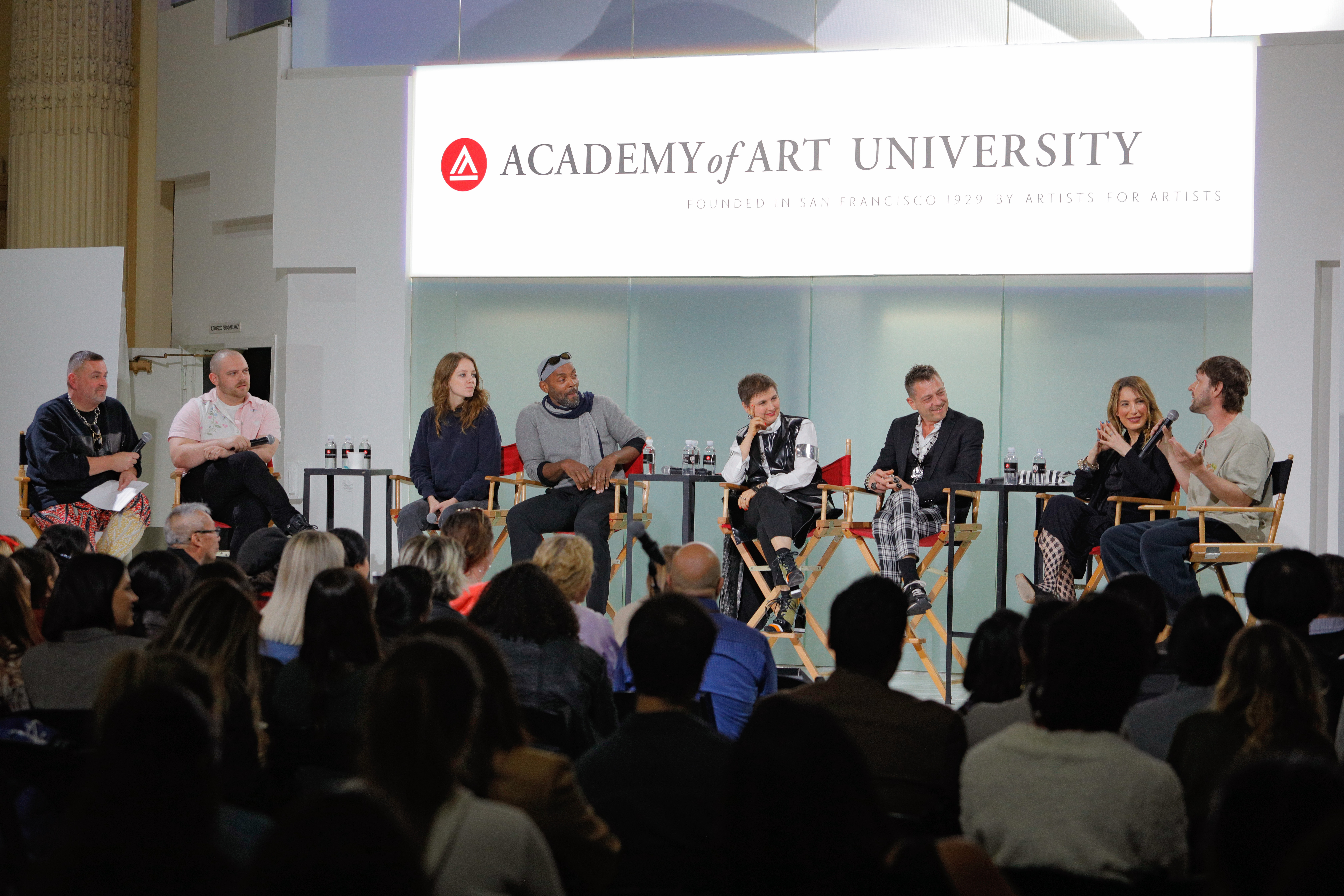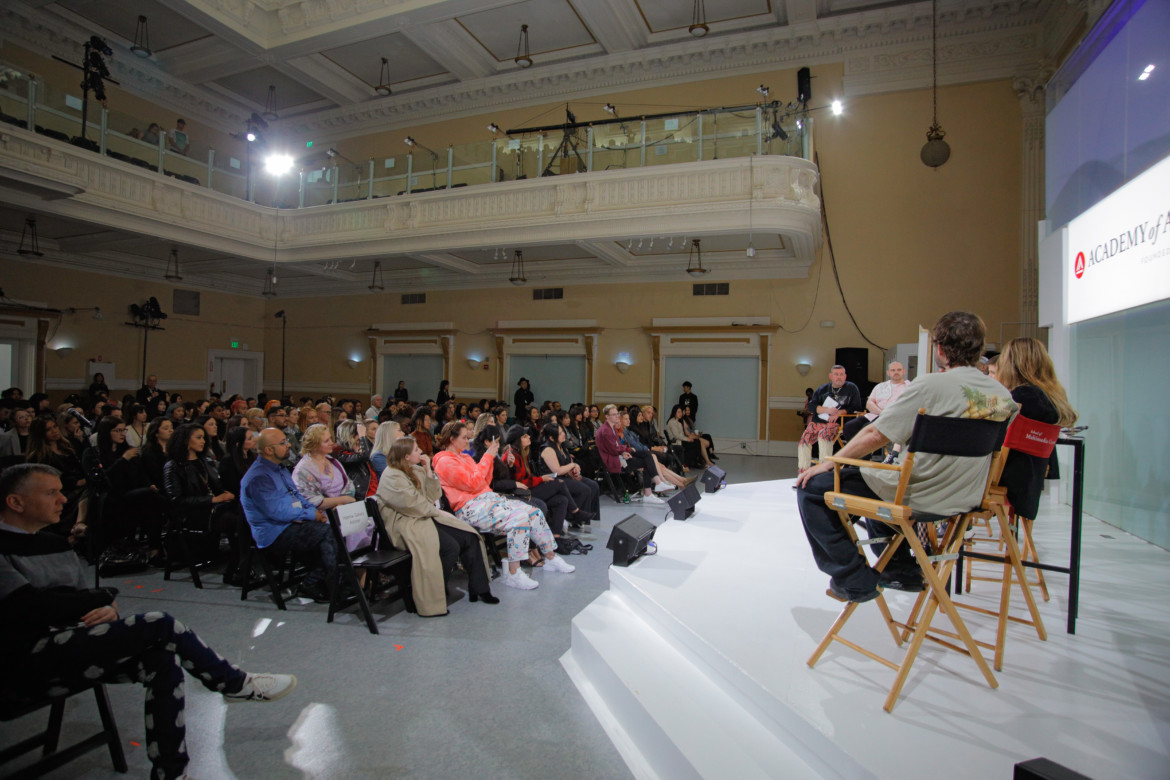The Fashion Discourse panel brought together experts for an open discussion about the industry’s present and future
By Nina Tabios
Among the myriad of conversations happening on Friday, May 10, it was the Fashion Discourse panel discussion that provided plentiful, if not forthright, perspective to 625 Polk. Moderated by the Academy of Art University’s School of Fashion Executive Director, Simon Ungless, the panelists engaged in a candid conversation that didn’t pull any punches when talking about the realities of working in fashion.
No topic was too sacred or taboo—the dialogue would swiftly shift from the influence of Instagram to criticizing the Met Gala to how to maintain creative freedom in an otherwise “monotonous, gunned down and commercialized” industry, as Ungless put it. And the speakers remained quick-witted and generous with their insight; there was a valuable nugget of info for anyone in the room to grab onto, whether you were a designer, stylist, journalist, or educator.
The panel was made up of Livia Stoianova and Yassen Samouilov of haute couture fashion house On Aura Tout Vu, also recipients of honorary doctorates from the Academy at this year’s Graduation Fashion Show; fashion designers Andre Walker, Edwin Mohney, and Bernhard Wilhelm; Olya Kuryshchuk, 1 Granary founder and editor-in-chief; and CFDA Director of Education and Professional Development Sara Kozlowski. It was a rather diverse group from nationality to experience.

2019 Honorary Doctorate recipients and founding designers of On Aura Tout Vu Livia Stoianova and Yassen Samouilov. Photo by Randy Brooke.
“I consider all of you pioneers actually. You push boundaries and you all maintain an independent spirit,” Ungless told the bunch. A fashion pioneer himself as Alexander McQueen’s collaborator early on in his career, Ungless directed the conversation toward the future and asked the panel to consider fashion’s current state and what is lying ahead for the young designers in the room.
Social media, namely Instagram, was a huge topic in the discussion. “People today are often too distracted and too concerned with self-promotion,” Walker said. They deliberated at length about how the technology has affected not only designers and consumers but also the creative process, promotion, and even the politics of fashion. Summed up, their solution to that ecosystem was to be authentic and stay true to your vision and hold fast to your personal interests, passions, and desires. When applied correctly, there’s always room to stand out even in fashion.
“All these conversations going on socials, the looking and observing … put those observations into your work. Anything you set out to copy or mimic that isn’t authentically you isn’t going to serve you,” Walker added. “Look at what’s going on in the fashion world. What can you contribute to it? What do you bring different to the table? See what structural foundations are around you, [and] how they can serve you as a designer.”
“When I was younger, there was such a broad view of people’s successes on what it means for something to be good, what it means for someone to accept your work,” Kuryshchuk said. “It can feel important to get gratification about work. And it took me a few years to lose that [idea] and once I did I was actually getting to create something really interesting and great.”

(L–R) School of Fashion Executive Director Simon Ungless, Edwin Mohney, 1 Granary Founder and Editor-in-Chief Olya Kuryshchuk, Andre Walker, 2019 Honorary Doctorate recipients and founding designers of On Aura Tout Vu Livia Stoianova and Yassen Samouilov, CFDA Director of Education and Professional Development Sara Kozlowski, and Bernhard Wilhelm. Photo by Randy Brooke.
“We never tried to be someone other than us and this is what kept us going,” said Stoianova, whose 20-year career has included designing commissioned garments for celebrities like Madonna, Beyoncé and Katy Perry. “Fashion cannot be a hobby. It’s just a life. People ask us why we are doing that and it’s because we don’t know how to do anything else.” Students kept the big questions going for the Q&A session. A handful of audience members stepped up to the microphone to ask about intellectual property and inclusivity, how global events impact fashion, turning design from a hobby into a business and if “glamour is dead.” Richard Kenwright, a B.F.A. styling student, asked about innovation. “It’s a strong recourse we strive for, it’s what our instructors tell us to aspire to. How do you guys define innovation?”
Stoianova’s definition is about going beyond aesthetics, factoring in “what’s happening with the world regarding ecology, fabrics, business model, bringing a garment to market.” To Walker, it is largely dependent on what you, as an individual, think needs improvement. Mohney agreed, circling back to the panelists’ core message in his response: anything designers pursue creatively must come from a deep, personal space.
“What are you seeking personally? What do you think needs to change? Address it in a way that’s specific to you,” Mohney encouraged. “And be original.”
